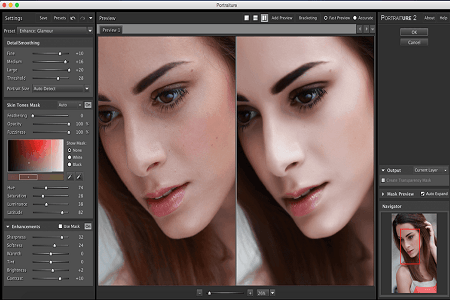- Noiseware Lightroom Plugin App
- Portraiture Plugin For Photoshop Cc 2017
- Imagenomic Noiseware Lightroom Plugin
Imagenomic Noiseware Plug-in – Noise Removal. Award-winning noise suppression software tool designed to decrease or eliminate noise from digital photo or scanned images. The Better way to remove Noise Noiseware is the highly-acclaimed, award-winning software tool from Imagenomic that is setting the standard for digital image noise reduction. The following instructions will explain how to install Imagenomic Plugins for Adobe Photoshop Lightroom on Windows platform. Downloading the Setup File; Running the Setup Wizard; Finishing the Setup; 1. Downloading the Setup File. Download the 'PortraitureLR2343.exe' plugin.
If you’ve every said “I wish Lightroom would let me do X”, then you might be interested in a plug-in. These little packages provide a powerful way to extend the functionality and capabilities of Lightroom in a number of different areas. There are plug-ins for exporting images to other sites like Flickr, Facebook, or 500px; adding more options to the LIbrary Filter; managing and consolidating your keywords; adding new file types for exporting; and analyzing your catalog for camera, lens, and focal length usage. If you regularly send your images to retail stores for printing, there is likely an extension that will allow you to export directly from Lightroom to the store.
A good place to start your search is at the Adobe Plug-In Exchange. The Exchange has a combination of both free and pay plug-ins and presets. Some are for older versions of Lightroom and may not work or may no longer be necessary, and some may be only for Windows or Mac, so check the compatibility information before you download.
There are also a lot of offerings outside of the Exchange, so a Google search will also give you good results. Just use common sense to make sure what you are downloading is safe.
Once you find a plug-in that you want to install, you will need to download it. Even if you’re downloading it from a reputable site, it’s always a good idea to leverage your antivirus software to make sure the file that you downloaded is clean. Haproxy 2.0 install. Norton and common sense are your best friend here.
If the file you downloaded is zipped, you’ll need to extract the plug-in file itself, which will have a .lrplugin extension. I recommend not leaving the file it in your Download folder because if you clean that folder out regularly, you’ll inadvertently delete your plug-in and have to re-download and reinstall it.
To add a plug-in, open the Plug-in Manager by navigating to File > Plug-in Manager (⌥⇧⌘,).
The Plug-in Manager is your dashboard that lists all of the plug-ins that you have installed in Lightroom and whether each is enabled or disabled. Even if you haven’t installed any yourself, Lightroom ships with a handful that allow you to integrate in to popular photo-sharing sites and provide the tethering support for your camera.
To add a plug-in to Lightroom, click the Add button to open Finder or Windows Explorer. Navigate to the location of your .lrplugin file, and either double-click or select it and click AddPlug-in.
Lightroom Fanatic – Select The .lrplugin file To Install
Noiseware Lightroom Plugin App
Once you add it, you will see your new plug-in listed.
Make sure your plug-in enabled, which you can identify with the green light next to it. If it is not enabled, you can select your plug-in and click the Enable button. Your plug-in might have more options that you can set, so be sure to read the documentation to take full advantage of it.
Not all plug-ins are created equally, and eventually you will run in to a problem with one of them. If Lightroom starts acting up, here are a few tips to try to find the culprit.

Portraiture Plugin For Photoshop Cc 2017
First, make sure you are using the most recent version of each of your plug-ins. Some will automatically check for updates, but for others you will need to manually check the version number in the Plug-in Manager against the place where you downloaded it.
If you have installed any plug-ins recently, try disabling those first and see if Lightroom starts behaving better. If it does, it’s likely that one of them isn’t cooperating. One at a time, enable each individually until you identify which one causes the issue. You should then either reach out to the creator of the plug-in, or find an alternative.
If disabling the new ones doesn’t help identify the offender, repeat the process for all of your plug-ins. It’s possible that plug-ins by themselves might be working, but they might interfere with others that you have installed. Disable all of your plug-ins and, one by one, start enabling them until you experience the issue, and then follow the recommendation about to reach out to the creator or find an alternative.
Want more Lightroom Fanatic? Sign up for our free mailing list! We’ll never spam you, and you’ll get more tips, resources, and free stuff!
Imagenomic Noiseware Lightroom Plugin
